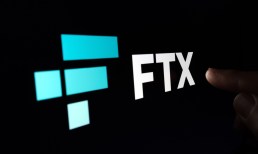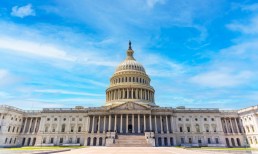The echoes of China’s economic slowdown have been heard across the globe, but locally, they’re certainly the loudest for Chinese businesses.
Analysts have largely been looking at the impact on SMEs in particular, especially as Chinese authorities promote bank lending to small businesses. This month, the China Banking Regulatory Commission (CBRC) reportedly ordered local banks to boost lending to small and medium-sized corporate customers.
But larger conglomerates are feeling the heat from economic woes, too.
Last year, Chinese officials launched a debt swap program, allowing local governments to swap outstanding debts for cheaper bonds. Reports at the time of the project’s announcement, however, pointed to its inability to address corporate debt, which accounts for 61 percent of debt across the country.
This month, the spotlight swung to the topic of corporate lending and the struggle the industry faces amid economic uncertainty.
Bank Lending
Advertisement: Scroll to Continue
China’s nonperforming loans (NPL) are spiking, reports said, with unnamed sources telling media that banks will soon be allowed to swap outstanding corporate debts for stakes in the companies that hold the loans.
It’s an effort geared towards easing the burden of holding onto these NPLs, as financial institutions in China are facing a 10-year high in the levels of bad business debts. The loans amount to more than $614 billion, reports said.
“Such a rule change shows banks’ bad loans have risen to such a level that this issue has to be tackled now before it’s too late,” said Shanshan Finance Head of Equity Trading Wu Kan to reporters at the time.
It’s unclear whether financial institutions will take advantage of the program or what they would do with the shares of the companies in which they have invested.
But as Chinese regulators look to tackle corporate debt on the bank-lending side of the market, the latest reports also highlight how the country is looking to approach the issue from the alternative lending sector as well.
Nonbank Lending
Last week, reports in The Wall Street Journal said online corporate lenders are facing a regulatory crackdown as executives at these platforms spoke out on the incoming plans to tighten risk mitigation requirements.
Online lenders gathered at the Boao Forum for Asia to discuss the impending rule changes; according to reports, the number of online lenders is spiking, with 2,595 players in the industry as of the end of 2015, compared to just 880 at the beginning of 2014.
It may mean more access to capital for corporates, but that also means rising debts. Reports added that the value of outstanding loans has risen 14-fold to $66.8 billion. Economic struggles have proven destructive to both the lenders and the borrowers.
“After the fast rise [in online lending marketplaces], however, business conditions deteriorated, and some P2P platforms imploded,” the publication stated, citing Ezubo Ltd., which went defunct last year with $7.6 billion left in outstanding debts.
Now, online lending executives are eyeing heightened risk exposure and impending regulations to prevent another Ezubo repeat as major factors threatening the industry. In response, reports said, these companies are stressing the need for adequate risk controls, adaptability to regulations and a sense of legitimacy amid a sea of noncredible lending sites.
One executive, WeLab Holdings Founder and CEO Simon Loong, spoke at the forum to note that online lenders can play an important role in properly helping businesses access financing.
“When these guys can’t get access to capital, what will they do?” he asked. “They’ll slowly go bust.”
Late last year, the China Banking Regulatory Commission vowed to “cleanse” the online and alternative lending industry, proposing new guidelines for lending platforms to operate in the country. While some players called the measures too harsh and strict in response, reports said 1,000 online lending platforms were cited as “problematic” by the CBRC.
Times are tight for Chinese businesses, and authorities are stepping in with a larger presence across both traditional bank lending and alternative online financing. From shifting the weight of nonperforming loans for bank lenders to cracking down on who (and how) online lenders can operate, China is seeking a remedy for the credit strain on its businesses — whether or not those efforts will prove effective remains to be seen.



